Choosing the proper roof underlayment is crucial for the longevity and protection of your home. Roof underlayment types serve as an invisible barrier, protecting against leaks and contributing to your roof’s overall thermal performance.
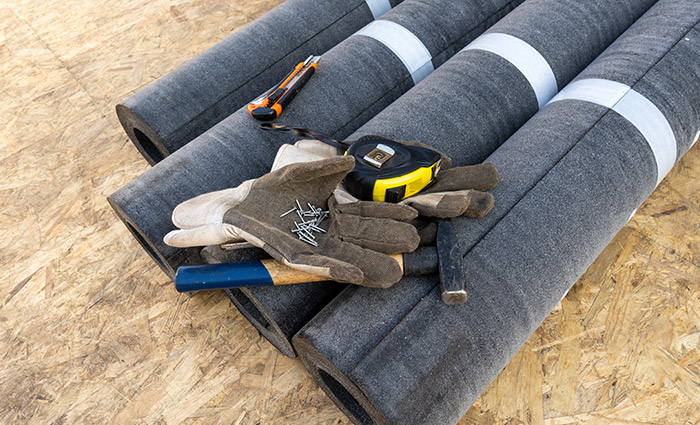
Whether you’re a homeowner facing roof repairs or a professional contractor, understanding the differences between asphalt-saturated felt, synthetic, and rubberized asphalt underlayments can guide you in making the best decision for a weatherproof and energy-efficient roofing system. This article explores these primary underlayment types, their unique characteristics, and how to select the ideal one for your roofing project.
Key Underlayment Takeaways
- Roof underlayment is an essential layer that protects against leaks, provides insulation for energy efficiency, and maintains the structural integrity of the roof deck.
- There are three main types of underlayment: asphalt-saturated felt for economical needs, synthetic underlayment for durability and performance, and rubberized asphalt for premium waterproofing in severe weather conditions.
- Choosing the right underlayment depends on factors like climate, roof slope, and budget. Local building codes and proper installation techniques also play crucial roles in roof performance.
Understanding Roof Underlayment
The roof of a house is like a helmet for the head, and just as a helmet has layers for added protection, so does the roofing structure. The outer shingles may form the hard shell, but beneath them lies an essential component, the roof underlayment. This roof layer material is strategically placed between the structural frame and the outer weathering surface, a guardian that stands vigilant against leaks, mold, and the ravages of water damage. The first line of defense is when the outer roofing layer succumbs to the relentless assault of nature’s elements.
This critical component doesn’t just bolster the roof’s defenses; it also provides additional insulation, contributing to a home’s energy efficiency and the overall comfort of those within. Its presence is like a silent sentinel, one that may go unnoticed until the day it proves its worth by holding the line against a storm’s onslaught, ensuring the tranquility of the living space below.
The Role of Underlayment
Roof underlayment may play second fiddle to the visible shingles or tiles, but its role is pivotal in the roofing system’s overall performance. While there are many parts of a roof, underlayment acts as a backup layer that steps in when the primary roof covering falters, sealing around the frame to keep the dreaded drips at bay. But its benefits extend beyond mere moisture management. It lays the groundwork for a visually pleasing roof by creating an even and uniform surface for the shingles to rest upon, ultimately enhancing the aesthetic appeal of the entire home.
Moreover, safety is a prime consideration in any home, and roof underlayment contributes to this by meeting fire safety standards. This inclusion into the roofing system ensures that the underlayment will not be the weak link in your home’s protective armor in the event of a fire.
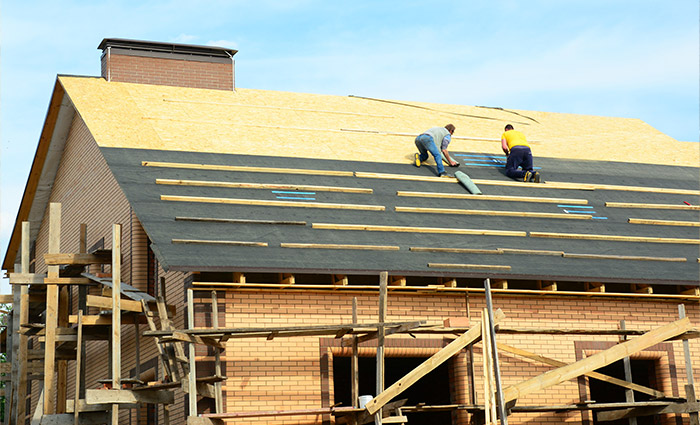
Why Is Underlayment Important?
The importance of roof underlayment cannot be overstated. It’s the unsung hero that:
- Prevents moisture from sneaking into the nooks and crannies of your home
- It plays a significant role in maintaining the structural integrity of the roof deck
- Shields the roof deck from water or air infiltration
- It helps preserve the wood’s integrity, preventing mold and structural damage
Beyond its protective qualities, the underlayment adds a layer of insulation to the roofing system. This extra buffer helps minimize unwanted air exchange through the roof, which can considerably impact energy bills by reducing heating and cooling costs. It’s a layer that pays for itself over time, making it not just an essential part of the roof but a smart investment for the energy-conscious homeowner.
Top Roof Underlayment Types: An Overview
The world of roof underlayment is rich and diverse, offering a spectrum of materials with unique properties and benefits. At the core, homeowners and roofing contractors often consider three primary types of underlayment: asphalt-saturated felt, synthetic, and rubberized asphalt. Each of these materials brings its own unique strengths to the table, and understanding their differences is crucial in selecting the best roof underlayment for your particular needs.
When it comes to types of roofing underlayment, there are three main options for roofing systems:
- Asphalt-saturated felt, the traditional choice, harks back to the days when roofing solutions were simpler.
- Synthetic underlayment: a product of modern engineering designed to withstand the harshest conditions.
- Rubberized asphalt underlayment occupies the premium tier, offering unparalleled waterproofing capabilities for those prioritizing protection above all else.
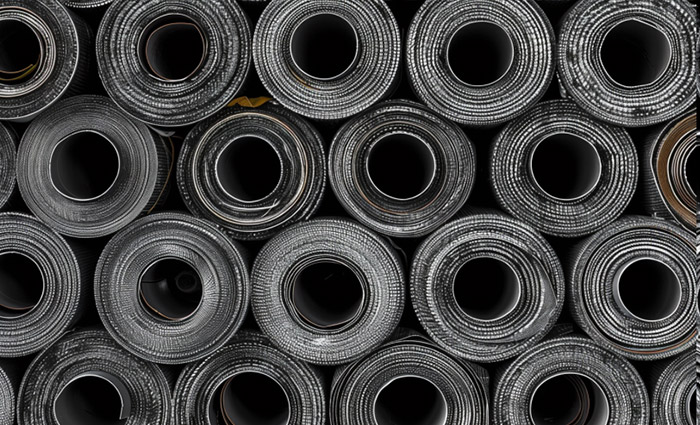
Let’s delve deeper into each type and uncover the traits that make them suitable for different roofing systems.
1. Asphalt-Saturated Felt
Asphalt-saturated felt underlayment, often referred to as felt paper or tar paper, has been the go-to choice for roofing underlayment for decades. Its makeup—a blend of asphalt, polyester, and plant fibers—provides a level of water resistance that comes from the asphalt saturating the basement of the felt. Available in two standard weights, the lighter 15 pounds and the heavier 30 pounds per hundred square feet, this type of underlayment caters to different roofing needs. While the 30-pound felt is more robust and offers better water resistance, the 15-pound option is lighter and more economical, albeit more prone to tearing and absorbing water if left exposed.
Despite its cost-effectiveness, asphalt-saturated felt has its challenges. The rolls are shorter and heavier, making the installation process a bit more laborious, as it involves more trips up and down a ladder compared to other materials. Additionally, it’s commonly attached to the roof with staples, which can be less secure than the fastening methods used for synthetic or rubberized underlayment options.
2. Synthetic Underlayment
In the quest for improved durability and performance, synthetic underlayment has emerged as a formidable contender. Constructed from polymers like polyethylene or polypropylene, it’s a robust and lightweight solution that offers the following benefits:
- Resists water, mold, and tears
- Provides enhanced traction for a safer installation experience
- Offers fire resistance for added safety
- Contributes to the longevity of the roofing system
Brands such as Owens Corning’s ProArmor and CertainTeed’s RoofRunner have set a high bar in terms of quality and features. Utilizing synthetic underlayment can help ensure a durable and long-lasting roofing system.
The advantages of synthetic underlayment include:
- It lies flat without wrinkles, ensuring a smooth application
- It has inherent strength and exceptional water resistance, providing long-lasting protection for the roof deck
- It can protect the roof deck for extended periods, even up to six months, which is beneficial in areas where construction may face delays.
3. Rubberized Asphalt Underlayment
For those who seek the highest level of waterproofing in their roofing system, rubberized asphalt underlayment stands out as the best option. Its composition of asphalt and rubber polymers, often fortified with materials like polyester or polyethylene, grants it exceptional weather resistance and a service life that can span 25 to 35 years. Although it comes with a higher price tag, its long-term protection makes it a worthy investment, especially in areas prone to severe weather conditions or for those considering asphalt shingles as their top roof layer material.
Installers should note that rubberized asphalt underlayment can be more challenging to work with due to its weight and sticky backing. However, once placed, it forms a durable barrier that doesn’t require additional fasteners such as nails or staples, thus minimizing the potential for leaks. Products like Grace Ice & Water Shield® HT showcase its ability to adhere to various roofing materials, creating a watertight seal that is particularly valuable in high-temperature environments.
Factors to Consider When Choosing Roof Underlayment
The decision to select an underlayment for your roof is not one to be taken lightly. Several factors come into play, each influencing the performance and suitability of the underlayment for your specific situation. The local climate, the design and slope of the roof, and, of course, the budget all play a part in determining which type of underlayment will serve your home best. It’s about finding the right balance between cost and the durability and longevity you expect from your roofing system.
Local building codes are also a critical consideration, as they can restrict the choice of materials and influence the overall cost. It’s essential to be aware of these regulations to ensure your roofing project meets legal requirements and provides the protection your home needs.
Climate Impact
The climate you live in plays a major role in determining the type of underlayment best suited for your home. North America’s diverse weather patterns—ranging from hot and dry to cold and humid—demand underlayments with specific performance characteristics to offer optimal protection. Selecting the appropriate underlayment for your climate ensures that it performs as intended and provides the necessary defense against the elements.
In particular, areas with significant snowfall, ice, or high temperatures would benefit from rubberized underlayment’s exceptional leak prevention capabilities. In contrast, hot and dry climates can affect the performance of bituminous underlayments, while cold and humid conditions might lead to moisture absorption and expansion in older felt underlayments. Therefore, a careful selection is crucial to ensure that your underlayment can withstand the specific challenges posed by your local climate.
Roof Slope and Design
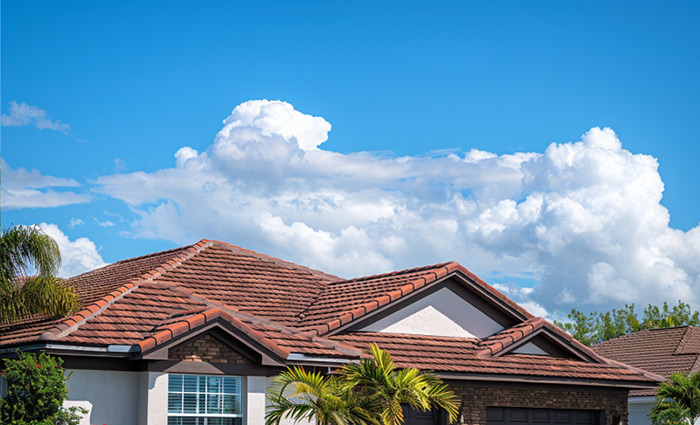
The architecture of your roof—its slope and design—also dictates the type of underlayment that will be most effective. For instance, low-slope roofs are more susceptible to water pooling and, therefore, require underlayments with greater water resistance, such as rubberized asphalt. On such roofs, especially those with a slope under 4:12, it’s advisable to use two layers of underlayment for added protection against water infiltration.
Steep-slope roofs may find a friend in synthetic underlayments, which offer:
- Increased walkability for installers
- Better resistance to tearing during high winds
- Flexibility to self-seal around fasteners, ensuring a snug fit and comprehensive coverage
These underlayments will benefit complex roof designs with multiple hips, valleys, and penetrations.
Budget and Cost-Effectiveness
While the technical aspects of underlayment are paramount, the budget is often the deciding factor. Felt underlayment is the most economical option, with prices that are gentle on the wallet but might come at the cost of durability and water resistance. Though more expensive upfront, synthetic underlayment offers more coverage per roll and longer-lasting protection, which may translate into cost-effectiveness over time.
Ultimately, the builder’s budget will influence the quality and service life of the underlayment. It’s a delicate dance between frugality and the desire for premium protection. Replacement costs should also be considered, as they can range significantly, with felt and tar paper being at the lower end of the spectrum.
Smart financial planning involves weighing the initial cost against potential savings from a longer-lasting, more durable underlayment.
Installation Tips for Roof Underlayment
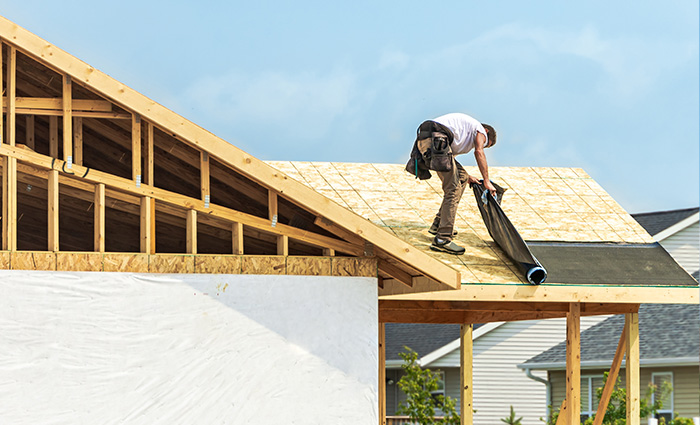
Installing roof underlayment may seem straightforward, but it requires careful attention to detail to ensure it performs its vital protective functions. The tips outlined here will help you navigate the installation process, whether you’re a seasoned roofing contractor or a determined DIY enthusiast. Proper preparation, effective laying techniques, and a keen eye for avoiding common mistakes are the hallmarks of a successful underlayment installation.
Getting it right from the start means more than just rolling out the material across the roof deck. It’s about creating a stable, watertight foundation for the shingles or tiles that will sit atop it. Let’s break down the essentials of preparing the roof deck, laying the underlayment, and circumventing typical installation blunders.
Preparing the Roof Deck
A clean, smooth, and dry roof deck is paramount before laying down any underlayment. Begin by sweeping away any debris, dust, or protruding nails that could potentially puncture the underlayment or cause unevenness under the shingles. Inspecting the roof deck for damaged sheathing panels is also crucial; replace them as needed to ensure a stable and uniform base for the underlayment.
For homes with older or spaced board decking, covering the surface with an approved decking material, such as plywood, is essential to provide a consistent and strong base for the shingles. This step is integral to achieving a level surface that will support the underlayment and, ultimately, the outer roofing layer.
Laying the Underlayment
The way underlayment is laid can greatly influence the efficacy of the roof’s waterproofing. Here are some steps to follow:
- Start from the bottom of the roof and work upwards.
- Ensure that each layer overlaps the one below according to the manufacturer’s instructions.
- Fasten the material securely to the roof deck using a roofing hammer or a cap nailer.
- Be careful to distribute the fasteners evenly to prevent tears or lifting that could compromise the material’s integrity.
For a more efficient installation, especially on larger roofs, synthetic underlayment is a favorable choice due to its lighter weight and wider rolls, which cover more area in less time. Use chalk lines to maintain straight rows, ensuring proper alignment across the entire roof for a neat and effective finish.
Avoiding Common Mistakes
Even with the best materials at hand, mistakes during the installation of underlayment can compromise the integrity of your roof. Here are some common missteps to avoid:
- Inadequate overlaps since they can lead to leak-prone areas.
- Nails not driven straight and flush with the shingle surface can compromise the roof’s wind resistance and potentially cause leaks.
- Failing to align the underlayment precisely with the eaves and rake edges can expose the roof to wind uplift and reduce the effectiveness of the edge protection.
By avoiding these pitfalls, you can ensure a proper installation of underlayment and maintain the longevity and effectiveness of your roof.
It’s also crucial to smooth out any wrinkles or air pockets before fastening the underlayment, as these can affect not only the appearance but also the performance of the roof. For steep slopes, the use of roof jacks and planks or roof harnesses is recommended to ensure safety during installation. Lastly, walking on wet underlayment should be avoided to prevent slips, and the material should not be left exposed for longer than the manufacturer’s recommended duration to prevent degradation.
Hiring a Professional Roofing Contractor
The intricacies involved in underlayment installation can be daunting. While the DIY route might be tempting, the stakes are high, and the margin for error is slim. This is where the expertise of a professional roofing contractor becomes invaluable. With their deep knowledge of roofing materials and installation techniques, roofing contractors ensure that your underlayment is installed correctly, safeguarding your home against future roofing woes.
By choosing a reputable contractor, you’re not just paying for the labor of their roofing services, but investing in peace of mind. The benefits of professional installation go beyond the immediate job at hand, offering long-term advantages that a DIY approach simply cannot match. Let’s explore the benefits of hiring a pro for your roofing project.
Benefits of Hiring a Pro
The most immediate benefit of hiring a professional roofer is the level of expertise they bring to the table. Their knowledge and skills ensure that the underlayment is securely installed, which is crucial for the overall assembly and performance of the roof. Professional roofers also have access to high-quality materials at cost-effective prices, which means better quality for your roof and potentially more significant savings over time.
A professional installation offers several benefits, including:
- Reduced risk of errors and safety hazards
- Protection against material defects and poor workmanship through roofing warranties
- Comprehensive warranties, sometimes including non-prorated and transferable options
- Clear coverage for installation-related problems and a process for resolving disputes
These benefits provide homeowners with added financial security and peace of mind.
Roof Underlayment Summary
As we’ve navigated the nuances of roof underlayment, it’s clear that this unseen layer holds the key to a durable and protective roofing system. From the traditional asphalt-saturated felt to the advanced synthetic and rubberized options, each type of underlayment offers unique benefits tailored to different climates, roof designs, and budgets. While seemingly straightforward, the installation process requires precision and care to avoid common mistakes that could compromise the roof’s integrity.
Ultimately, the best roofing outcomes are achieved through informed decision-making and skilled workmanship. By understanding the importance of underlayment, choosing the suitable material for your needs, and entrusting the installation to a professional roofing contractor, you can ensure that your home remains a sanctuary against the elements. Let the knowledge you’ve gained here inspire you to invest in the longevity and integrity of your roof, for it is not just a cover over your head—it’s the shield that stands between you and the sky.
Underlayment Frequently Asked Questions
Below are the most common roofing underlayment type questions our Villages roofers get:
Which is better, felt or synthetic underlayment?
Synthetic underlayment is better than felt due to its resistance to mold growth, making it suitable for exposure to moisture.
Which roof underlayment is waterproof?
Rubberized asphalt underlayment is a waterproof roofing material due to high concentrations of asphalt and rubber polymers, making it ideal for snowy regions.
What is the new type of roof underlayment?
The new type of roof underlayment is synthetic, made from woven or spun polyethylene or polypropylene. It provides increased durability and tear resistance compared to traditional asphalt-saturated felt. However, it does come with a higher installation cost.
What is the best roofing underlayment to use?
Synthetic roof underlayment is the best choice, as it is more durable, easier to install, and repels water better than traditional felt underlayment. While it may be more expensive, the benefits outweigh the cost.
What is the primary purpose of roof underlayment?
The primary purpose of roof underlayment is to provide an extra layer of protection between the roof deck and the outer roofing material, offering insulation, moisture resistance, and improving energy efficiency.
(352) 293-2449
For the original version of this article visit: https://roofersthevillagesfl.com/roof-underlayment-types/
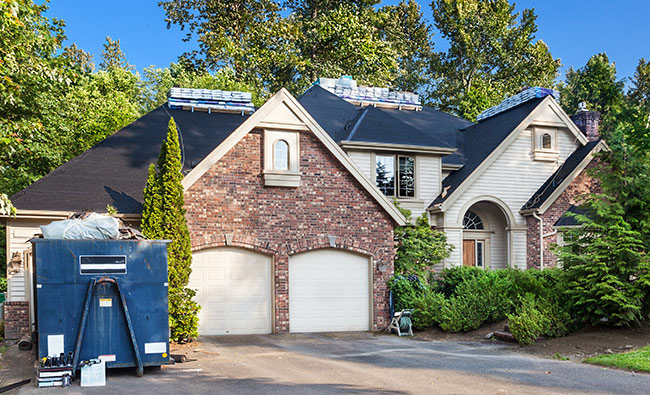
No comments:
Post a Comment
Note: Only a member of this blog may post a comment.